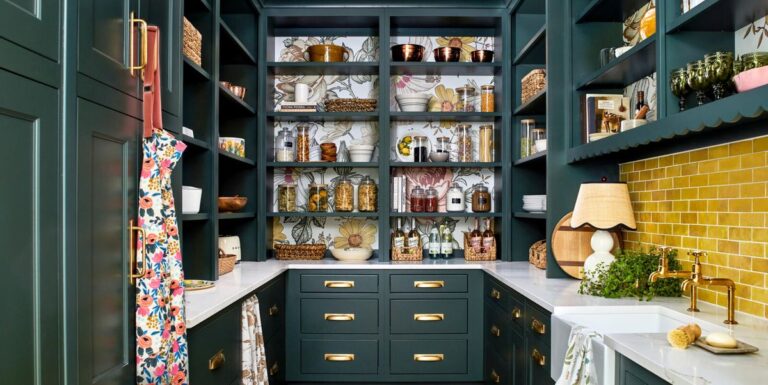In recent years, we've seen a rise in what some designers have unwillingly dubbed the “dirty kitchen” and more affectionately called the “back kitchen.” A back kitchen is essentially a working kitchen located behind the main space that serves as a separate area for cooking, preparation and cleanup.
So where did this trend start? According to Sarah Robertson of Studio Dearborn, it started to gain popularity as main kitchens opened up to adjacent entertainment or living areas. “These back kitchens allow dirty dishes to pile up and bakers to make a mess without interfering with the main cooking zone,” she says. While having a back kitchen might sound like a dream, there are some things to consider.
What is the difference between a walk-in pantry, a butler's pantry, and a dirty kitchen?
a Walk-in pantry They take up less space and are primarily for food storage, so they save a lot of cabinet space. The smartest design is the shallow shelves that are easy to reach.
Traditional Butler's Pantry In the space between the kitchen and dining room that often houses essentials for a well-decorated tabletop, many are converted into breakfast or cocktail bars, where the team at cabinet makers Bakes & Kropp typically incorporates at least one beverage refrigerator, a small sink, and an ice maker.
Back kitchen or Dirty kitchen The full kitchen features cleaning essentials like a deep sink and dishwasher, as well as a wall-mounted oven, freezer, wine fridge and plenty of space for small appliances.
Who is a messy kitchen for?
Matthew Quinn of Design Galleria says that subspaces can benefit everyone, citing “entertainers, procrastinators, clean freaks, Tasmanian devils, families with kids, and gadget-obsessed homeowners.” Just be careful not to overload the fridge, as that can lead to frustrations like “taking five minutes to find the sour cream,” and make sure to ventilate, Quinn warns. Designer Karen Rideau of Kitchen Design Group adds that smart organization is key to keeping the room running smoothly. She recommends separating food storage, appliances (small and large), and cutlery, so everything is easily accessible.
How much does a dirty kitchen cost?
In some cases, a subdivision kitchen can be just as expensive as a main kitchen because it requires cabinets, countertops, plumbing, appliances, and even structural needs like new walls and pocket doors, says Tanya Smith-Shiflett of Unique Kitchens & Baths. A dirty kitchen can easily cost $45,000 to $55,000. And it goes up from there. According to Zillow, a kitchen remodel can have an ROI of up to 80 percent, so depending on your budget and future plans, the investment might make sense. In theory, upgrading your dingy kitchen could increase the value of your home by more than $40,000.
She tells her clients that if they plan to live in the home for only five to 10 years, it may not be worth the investment. Besides money, what would you be giving up? Another room, probably. “I usually convince my clients to move a main-floor laundry room to the second floor or downsize a large mudroom,” says Laura McCroskey of McCroskey Interiors. In reality, you'll need to find the space or add on to an existing structure. “If you're a germaphobe who cleans while you cook, you may not need this addition,” says McCroskey.
to follow House Beautiful upon Instagram and Tick tock.








